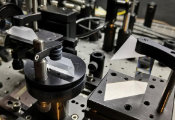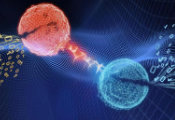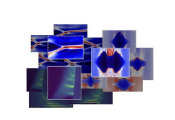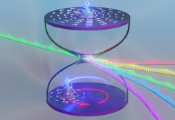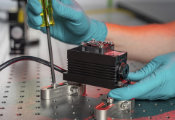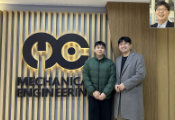Introducing Two Powerful New Capabilities in Azure Quantum Elements: Generative Chemistry and Accelerated DFT
June 18, 2024 -- Microsoft’s mission is to empower every person and every organization on the planet to achieve more. Azure Quantum Elements contributes to this mission by offering scientific capabilities based on AI and cloud high-performance computing (HPC). These user-friendly tools greatly increase the productivity of scientific research and remove barriers on the path to scientific discovery by substantially reducing the effort and expertise needed to perform what were previously daunting tasks. Specifically, these capabilities use Copilot for Azure Quantum, a natural-language interface that can be used by experts and non-experts alike, making Azure Quantum Elements accessible to more people and increasing the speed at which complex scientific problems can be solved.
Generative Chemistry helps scientists discover novel, synthesizable, and useful molecules quickly
Today, the Azure Quantum team at Microsoft is announcing Generative Chemistry—an upcoming capability that has the potential to greatly simplify this process and help scientists quickly discover and design new compounds with desired properties, thus increasing the productivity of product innovation.
You provide information on desired molecular characteristics for your specific application. Additionally, you can supply reference molecules if you already have some possibilities in mind. The information you provide is used to generate seed molecules from a dataset—those seed molecules are then used to initiate the guided AI generation of candidate molecules for your application. This is accomplished by applying multiple AI models and a unique methodology to identify new compounds that match your criteria. In this step, you have several options for configuration such as selecting the most relevant generative AI model, specifying the number of molecules to be generated, indicating the key molecular properties of interest, and screening compounds for toxicity.
AI-based screening models predict properties of the candidate molecules that are important for real-world applications—such as boiling point, density, or solubility. A feedback loop sends this information back to the guided AI generation (step 2) to modify the selection of candidate molecules. In this step, you also have the option to fine tune the AI models for your specific application.
The pool of potential candidates is further narrowed through a step that uses AI-guided synthesis planning to determine the feasibility of making the molecules in a laboratory—this is important because some novel molecules with desired properties may be difficult to synthesize. In this step, synthesis pathways are predicted, and candidate molecules are filtered based on how easy they are to make.
Highly accurate HPC simulations are performed on the top candidates. Accelerated DFT can be used to screen candidates for electronic properties such as dielectric constant, ionization potential, and polarizability. AutoRXN predicts chemical stability or reactivity, and it can also be used to provide insights on possible synthesis pathways.
This entire process takes only days, shaving months or even years off trial-and-error laboratory experiments that were previously required to arrive at this point. Generative Chemistry suggests entirely new compounds and gives scientists the freedom to focus on only those molecules that are fit for the desired purpose—saving time, money, and effort. This new capability will allow for rapid progress in the development of novel therapeutics, sustainable materials, and more.
Accelerated DFT offers substantial increases in speed compared to other density functional theory codes
Density functional theory (DFT) is one of the most popular methods in computational chemistry due to its efficiency and accuracy in modeling quantum-mechanical properties. It allows researchers to simulate and study the electronic structures of atoms, molecules, and nanoparticles as well as surfaces and interfaces, thus predicting properties such as dielectric constant, ionization potential, and polarizability. Scientists can then tailor those properties to optimize them for specific applications.
Although DFT is highly valuable for research and product design, most DFT codes need to be run directly by the user in HPC clusters, which can be a difficult undertaking. Additionally, DFT—when run on traditional HPC hardware—requires substantial compute power and becomes constrained as the molecules being studied or designed increase in complexity and size.
To simplify and improve this process, Azure Quantum and Microsoft Research designed and launched Accelerated DFT, a code used to simulate the electronic structure of molecules. Accelerated DFT can determine the properties of molecules with thousands of atoms in a matter of hours. It performs substantially faster than other DFT codes and offers a 20-fold average increase in speed compared to PySCF, a widely used open-source DFT code.1
The setup of Accelerated DFT is made simple by providing the software as a service, requiring no code compilation or configuration on the user’s part, and it has a simplified API to streamline the computational process. Furthermore, a Python Software Development Kit (SDK) offers seamless integration into a wide variety of computational chemistry environments, which allows researchers to incorporate DFT calculations into complex chemistry workloads. Accelerated DFT is now available in Azure Quantum Elements private preview; it will also become part of Generative Chemistry.
Accelerated DFT can substantially expedite research across a wide spectrum of chemical disciplines by employing the power of Azure’s cloud architecture. Accelerated DFT can also produce large and highly accurate datasets of molecular properties that can be used to improve AI models, which require large amounts of training data. By rapidly generating training data, new molecules can be discovered faster, and known molecules can be improved, leading to innovations in therapeutics, sustainable products, and more.


